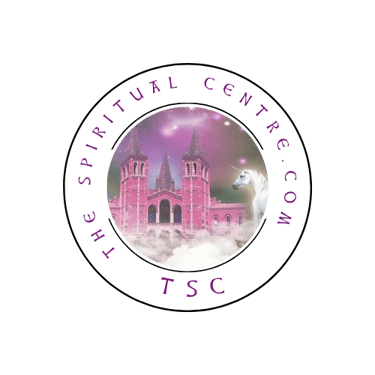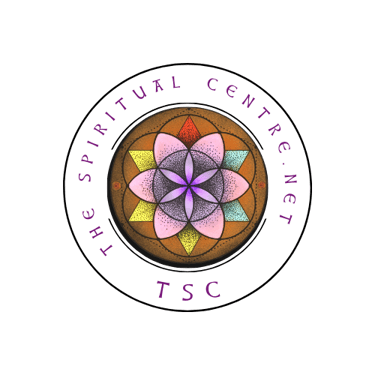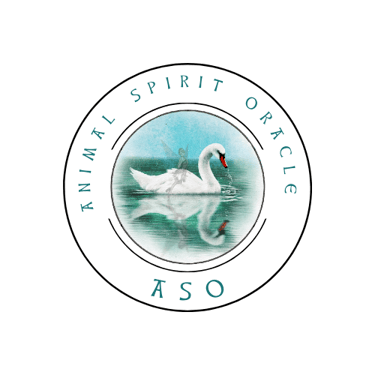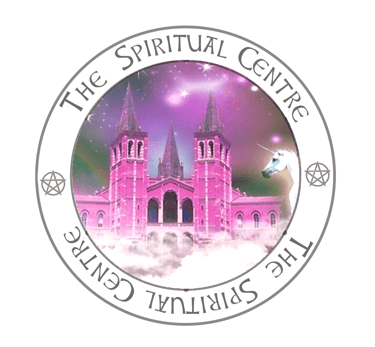The Spiritual Centre.co.uk
Celtic Gods and Deities
The Celtic gods and deities originated from the men, women, entities, and elementals that resided in the Celtic territories. The Celts significantly influenced neighbouring cultures, especially the Druids, as well as the Gauls, Norse, Greeks, and civilisations in the eastern Mediterranean region. These civilisations also influenced and contributed to one of the most remarkable cultures in Earth's history.
Many local societies throughout the Northern Hemisphere incorporated the rites and rituals of Celtic and Druidic traditions. The Celtic empire was one of the most successful civilisations in history. Bnwyfre, 'life force energy', was assimilated into local culture and incorporated and distributed through the practices of the Druids.
Celtic culture assimilated local gods, deities, totems, and entities into its belief system while also sharing its culture with local communities. The main reason for their continued success was their ability to be multicultural and to adopt and adapt at a local level.
Therefore, a variety of local totems and entities have been included here, along with their respective regions of origin where applicable.
We have alphabetised this list solely for ease of reference.
Beli Mawr - Belenus (Welsh/Italian)
Bran (Welsh)
Branwen (Welsh)
Brigid (Celtic)
Cailleach (Irish)
Ceridwen (Welsh)
Cernunnos (Celtic)
Cronos (Greek) x 3
Dana - Danu (Celtic / Irish)
Eostre (Celtic)
Epona (Celtic / Roman)
Freya - Frigga (Celtic / Germanic
Gaia
Gwennefoedd (Welsh)
Odin (Nordic / Celtic) x 2
Beli Mawr / Belenus
Beli Mawr is known as being among the first recorded kings of Britain, along with his sons Cassivelaunus, Caradoc, and Llefelys. Beli in his later years married Anna, a personal maid to Moraig, a princess from Fortingall, daughter of Metallanus, a king of Scotland and high priest of the Ur Grove.
As a young man known as Belenus, he was famous in Italy for leading the tribesmen into battle with the Roman oppressors. Again, in the south of France, his tribesmen caused the Romans many problems as they dominated and conquered new frontiers. He retired to Britain in his later years and co-ordinated his sons and armies to battle the Romans in Britain with great success. He was known across the kingdoms as the shining one; such was his love for Welsh gold from his own mines. His armour was made of gold, his chariots emblazoned with gold threads, and the wheels of the chariot threaded with gold veins, giving him the appearance of flying. (See Alder)
Bran
Bran the Blessed is known to have the emblem of a raven in flight as his symbol, as well as the raven basking in the sun. His uncle, Beli Mawr, also used these emblems and insignia. The connection between these ancient figures and the Alder Tree extends beyond mere folklore. The tree's wood has long been used to create magical instruments and protective talismans. Its bark, when boiled, produces a deep red dye reminiscent of blood, further cementing its mystical associations. The tree was the mast for many an ocean-bound ship, with the crow's nest mounted on top.Bran is said to have stretched his body across a river, allowing his troops to escape, but was caught himself and beheaded. His head spoke to his followers for seven years before being buried. His ravens are still at the Tower of London, as it's thought that their departure will doom the city. (See Alder)
Branwen
Branwen embodies the gentleness of womanhood and carries out her duties with care. She encourages everyone who approaches her to embrace the love that can be found in all things. The romance of life encompasses the beauty, love and innocence in all that is seen and unseen. She is protected by life itself and the energies that wrap around and protect her. Following her failed marriage, she took a vow of chastity and servitude, and no man was ever allowed to lay eyes on her or be in her presence from that day forward.
She stands at the edge of the forest, her red hair shimmering in the glow of the new dawn. Her willowy frame is waiting to embrace life, encouraged by her own strength, character, nobility, majesty, and morality, when she will step forward and embrace fresh opportunity with love and passion as only she knows how.
To women left alone because of the savagery of war, she is a refuge; for the children, she is Mum. Creating havens and sanctuaries along the Welsh, Cornish, and Devon coasts, she brings peace, calm, and hope to those in need, the unfortunate victims of war.
She restores innocence with whispers of hope that will only be heard by those that need love; she is embraced by all that understand, surrounded by the murmurs of starlings, and protected by nature's beauty. She gives her love unconditionally.
Branwen is a Welsh deity forced into an arranged marriage to a king in Ireland; she was abused and escaped by training a starling to take a message to her brother Bran. He rescued her, and she spent the rest of her days hidden from the eyes of men and creating sanctuaries, nunneries, along the west coasts of Britain. (See: Birch) (See Alder)
Brigid, also known as Saint Brigid, Brigit, Brighde, or Brigantia, is a deity recognised by various names. The legends surrounding her are rich and diverse, encompassing Celtic, Irish, and Scottish traditions, and span the seasonal festivals from Samhain to Imbolc, covering autumn, winter, spring, and summer. Her attributes were such that she was known to some as a triple goddess; her skills are those of the poet, the smith, and the saviour. (See Alder) (See Willow)
Cailleach - Brighde
Cailleach, sometimes pronounced as Kar-li-arhc, a modern version of this name would be Colleen or Carly, is revered as the wise woman of Samhain, a time steeped in tradition and rich with mystical significance. She makes her grand entrance during this ancient festival, marking the onset of winter with an air of authority and wisdom that captivates all who celebrate. Her reign extends until Imbolc, a time when the Celtic world transitions towards warmth and renewal. As winter begins to wane, Brighde (Bridey) will take over and encourage all things to prosper in the warmer climate. Cailleach has been known to linger with the colder weather, with her presence felt as late as Beltane before retiring to her caves in the mountains of the North.
Cailleach is often depicted clad in a striking grey hooded cape that billows around her like clouds gathering for a storm. With each purposeful stride she takes while wielding her staff, she is said to create mountains that freeze into ice beneath her feet, an enchanting image that evokes both awe and respect for her power over the harshness of winter. Her appearance is strikingly ethereal; with flowing white hair cascading down her shoulders, pale skin reminiscent of freshly fallen snow, and piercing blue eyes that seem to hold centuries of wisdom within their depths, she embodies the archetype of the winterborne crone or hag.
This portrayal serves not just as a representation of age but also as an embodiment of resilience and strength inherent in nature’s cycles. Cailleach's presence reminds us that while winter may seem bleak at times, it is also a period for reflection and rest before the vibrant rebirth heralded by spring. In this way, she stands not merely as a figure from folklore but as an enduring symbol of life's cyclical nature, an essential reminder that change is inevitable and necessary for growth. Embracing Cailleach's essence allows us to appreciate both the beauty found in stillness and the promise held within each season's transition.
It is Cailleach who skilfully creates the paths for the deer, guiding them towards new pastures that are abundant with fresh food and providing them with essential shelter to protect them from the harshness of winter. This ancient goddess, often associated with nature’s fierce and raw elements, plays a critical role in ensuring the survival of these creatures during the coldest months of the year. Using her staff or hammer, she will forge paths through mountains, create coves within a rock face, and break the ice that covers lakes to ensure the animals under her care are loved, protected and can prosper even under the harshest of conditions.
Alongside her, the Holly Queen concedes to the Oak King, who makes his appearance at the Winter Solstice; he signals the start of longer days. The White Woman of the Woods, who comes from the birch forests, she who embodies wisdom and nurturing care for the stag, the deer and the sacred white eilidh. Druantia is the queen of the dryads who resides in the fir tree. Together, they stand ever-vigilant against nature's more brutal forces during winter's grip, reminding us that even in our darkest times, there exists a harmonious balance that supports life. Their watchful presence ensures that animals thrive and serves as a poignant symbol of hope and renewal amidst desolation.
Brighde first appears at Imbolc, where she is celebrated for bringing the dawn of a new day and for ushering in the wind from the East to replace the North wind. Cailleach concedes her hold gracefully, allowing Brighde to birth the lambs and the domestic animals within the household. Brighde matures with the moons into Brigid, a poet, healer, and smith. Her animals age with her; the boar cub becomes Torc Triath, and the oxen are revered forever in the archives of history as Mag Fea and Mag Femin. They would forever keep Ireland in good health. As a smith, her skills enabled a whistle for all women to call to each other when alone in the night.
As Beltane passes, it is Brigid who leads the charge of the seasons. The Holly Queen at Summer Solstice once more takes her crown, bringing with her shorter days and longer nights. The harvest brings with it Lammas (Lam-mass) and the gathering of the seed. Lug (Lugh) brings the gathering of the fruits, and Lughnasadh (Lugh of the afternoon sun) (Lu-na-sah).
Just as the arrival of Venus introduced Brighde in early spring, the arrival of Venus in autumn will bring back Cailleach, a gentle reminder that youth matures in an ever-ending cycle of life.
Samhain, a time when the seeds and fruits have been gathered and the livestock brought in from the fields. Samhain is marked by a ritual of blessings for the new year and the knowledge that Cailleach will once again act as a guide and wise woman through winter. (See: Birch)
Ceridwen
Ceridwen is an enchantress of Gipsy heritage. Her hair is as black as Welsh coal, and her beauty has the power to ensnare men. Ceridwen embodies countless qualities, serving as a goddess of inspiration, transformation, and rebirth. As a mistress of change, she possesses the ability to alter circumstances for the greater good.
Her abilities as a wordsmith allow her to bring new meaning to spoken words, cast spells, and shape change to suit her desires. She is a formidable goddess, renowned for her power to adopt and adapt circumstances and make them her own.
It has been suggested that she originates from the thirteenth century, arising from a blend of earlier tales. However, the truth is that she hails from Wales, where she has been spoken of since before the Roman invasion of Britain. Her name has been whispered among those in the know and she is favoured within circles whose allegiance remains unwavering. (See: Willow)
Cernunnos
Cernunnos is one of the older gods worshipped before the rise of the Druids but respected and adopted because of his energy. He may be linked to Cronos due to his ties to nature's cycles and forest animals. Often depicted with antlers, Cernunnos embodies the spirit of wildlife and fertility, representing not just the harmony between humans and their environment but also the complicated equilibrium that defines life itself. His presence in ancient lore signifies a deep reverence for the natural world, highlighting themes of regeneration and growth. It's worthy to note the mythology and how various cultures have woven Cernunnos into their spiritual practices.
The Celts saw him as a protector of animals and a guardian of the forest's secrets, while others may have linked him to agricultural abundance due to his connection with fertility. This duality makes him a powerful symbol for those seeking guidance on both personal and environmental levels. In today's context, many individuals are rediscovering Cernunnos as an emblematic figure within modern paganism and nature-based spirituality. His teachings remind us to respect our surroundings, honour our instincts, and embrace our wildness, qualities often suppressed in our fast-paced lives.
Cernunnos originated in Britain and made his way across what we know today as Northern Europe; one such place here in Britain is Edzell Castle, Scotland, where local legend encouraged the nobleman of the time, in the 13th century, to create a plaque in his honour. The Rowan trees within the grounds are there in relation to a mystical gateway linking Elysium to Gaia. The quantity of wild animals locally is also a fitting tribute to the abundance of energy and the lore of attraction that resides within Cernunnos and his guardianship over the local area.
It is believed the iconography portrayed on the Gundestrup Cauldron is in tribute to Cernunnos, sitting cross-legged with horns growing from his head, a torc in hand and surrounded by creatures from the forest. This striking imagery offers a glimpse into the rich tapestry of ancient beliefs and the reverence held for nature and its spirits. Cernunnos, often regarded as the god of fertility, life, animals, wealth, and the underworld, embodies a profound connection to both the wild and mystical aspects of existence. His serene yet powerful presence reminds us of our relationships with nature—an intricate dance that has echoed through time. The creatures encircling him—the graceful stag, industrious boar, and curious hare—all serve as symbols of not just earthly life but also spiritual transformation.
Each animal carries its significance in folklore; for instance, stags are often considered messengers between realms due to their majestic antlers that reach towards the heavens. The torc he clutches may signify status or power among ancient tribes—a reminder that humanity has long sought connections with higher forces through symbols and rituals. As we study this artwork's meaning, we uncover layers of cultural identity intertwined with reverence for nature’s cycles—a theme that remains incredibly relevant today. By reflecting on such historical representations, like those found in the Gundestrup Cauldron, we can cultivate an appreciation for our shared heritage while fostering a greater understanding of how these beliefs continue to influence modern spirituality and environmental consciousness.
The Cernunni are a tribe of half-human and half-deer with Cernunnos as their leader. It is suggested that members of the tribe ventured across the northern hemisphere, establishing themselves as community leaders. (See: Birch) (See: Rowan)
Cronos
Cronos ruled the earth during the Greek 'Golden Age'. During this period, there was no immorality, and all living things adhered to their own sense of spirit and godliness. Old age and long life was frequent and followed by an afterlife as a guardian of earthly affairs from Elysium.
The concepts of the Son of Gaia (Mother Earth), nobility, peace, and harmony were central to all living beings; this mutual respect for life contributed to a youthful appearance for many, even as they aged.
In this golden age of peace, love, and harmony, people did not need to work, and instead, as beings of leisure, they fed on the abundance of food provided by Gaia.
Saturday in ancient Greece and many cultures throughout the northern hemisphere was celebrated as the first day of the week and associated with Saturn, with Cronus having been named after the ruling planet of this time. The winter solstice marked the transition from the longest shadow to longer days.
As man took precedence over the environment, greed and disharmony followed; the end of the 'Golden Age' in Greece coincided with the birth of the Iron Age in Britain. In Greece, Pan and his followers fled to Arcadia. These people are half human and half goat, and they are adorned in gold. In Britain, it was the Cernunni, half human and half deer, followers of Cernunnos, who retreated to the forests of Britain and then Northern Europe, all under the ever-watchful eyes of Gaia. (See: Birch) (See: Rowan) (See: Ash)
Dana - Danu
Dana is an earth goddess recognised in various forms across the Celtic kingdoms; she is often referred to as the Mother of Earth in Britain and is associated with numerous streams and waterways. It is said that the Germanic tribes named the Danube River after her. Cultures around the Black Sea know her as Sonia, a goddess linked to the lakes. Moving north into Siberia, Sonia is celebrated as a prominent goddess of the waterways. Further east, she is mentioned in the Vedic scriptures as the water goddess Danu.
Dana, or Danu, is said to be the original goddess from whom all gods originate. She is associated with the Tuatha Dé Danann, which translates to 'Folk of the Goddess Danu'. The source of this information is uncertain, and it is likely a claim to fame. (See: Willow)
Eostre - Ostara
Eostre is a goddess of the springtime; she arrives with the east wind, bringing an end to the harshness of winter. She brings with her the hare and rabbit; she ruffles the starlings, who gather and welcome her back, creating magnificent displays in celebration of her return. The cherubs, including Cupid, along with the Hesperides in the orchards, and the catkins on the willow appear with Eostre, meaning warmer days are coming soon.
Eostre heralds the arrival of warmer days, bringing fertility to the land. She encourages the waters to recede, allowing the earth to once again yield fruit. As the spring equinox approaches, animals awaken from their hibernation and slumber, celebrating the equinox and the equal balance of daylight hours with dark. (See: Willow)
Epona
Epona, the horse goddess, is said to protect them. Epona is one of the few deities known across the entire Celtic region, and she is also an early deity dating from at least 500 BC, continuing into the era of Roman rule. Additionally, she is the only deity adopted by the Romans and transformed into their protector of cavalry.
Statuettes were made and placed in stables; such was the belief in her energy, not just as a protector of horse and rider but of fertility and foals alike. Statuettes frequently have her seated with sheaves of wheat and stacks of apples. Images portray her standing with a horse on each side, and occasionally she is shown seated on the horse while holding its mane.
Epona’s significance extends beyond mere protection; she embodies the profound bond between humans and horses, reflecting a relationship built on trust and companionship. In ancient times, it was customary for riders to offer prayers or small tokens of gratitude to her before embarking on long journeys or competitions. This reverence illustrates how vital Epona was to the daily lives and spiritual practices of those who relied on these magnificent creatures.
Equestrians still feel her influence today, invoking her name for guidance and safety during rides. Many modern horse owners keep small figurines of Epona in their stables as a way to honour her legacy, believing that her spirit will continue to watch over them and their beloved animals. The imagery associated with Epona serves as a reminder of the interconnectedness between agriculture, fertility, and the equine world, often depicting lush harvests and including apples alongside graceful horses.
As we navigate the rich tapestry of Celtic mythology, it becomes evident that Epona is not just a deity of horses; she is also a symbol of strength, nurturing, and abundance. Her enduring presence across cultures signifies our timeless appreciation for these noble animals and highlights how deeply intertwined they are with our history and spirituality. Embracing this connection allows us to foster even greater respect for our four-legged companions while recognising the ancient wisdom that continues to guide us in our journey together.
The Uffington White Horse, an iconic chalk figure etched into the hillside of the Oxfordshire countryside, boasts a fascinating and layered history that stretches back to around 300 BC. This ancient creation serves not only as a piece of art, but also as a canvas where local history has etched vibrant tales of dancing, merriment, and joyous celebrations, echoing through the ages. In the warm embrace of community gatherings, we can imagine locals coming together under starlit skies, their laughter intertwined with the rustle of leaves as they honour their rich heritage.
There are numerous stories of people lovingly placing small statuettes on this magnificent hillside, a gesture filled with reverence for their ancestors and deeply ingrained traditions. This tapestry also features the age-old custom of cider drinking, a tribute not only to the fruit that nourished them but also to Epona, the revered goddess associated with horses and fertility in Celtic mythology. There are striking parallels between these ancient ceremonies and the veneration of Epona.
A young foal today taking her name is just one instance of the legacy and wisdom that have been passed from generation to generation for thousands of years. Every child dreams of owning a "pony". This desire often stems from the enchanting stories of magical adventures and unforgettable friendships, which have been woven into our culture through folklore and literature.
The bond between a child and their pony is more than just companionship; it represents trust, learning, and the nurturing of dreams. As parents or guardians guide their children in caring for these spirited creatures, they unwittingly impart life lessons about responsibility, empathy, and patience. The joyful laughter echoing across fields as a child rides their pony is a sound that resonates with timeless joy, a reminder that these connections are as crucial today as they were in ages past. Moreover, ponies often serve as gateways to experiencing nature's wonders.
Those moments spent grooming or riding can instill a lifelong appreciation for the environment. It’s fascinating to think how each new generation continues this cherished tradition while cultivating its unique relationship with horses. So when we witness young hearts forging bonds with foals like our newly named friend today, we are reminded that these small yet significant moments contribute to an enduring legacy, one that celebrates not just the joy of ownership but also the profound connection between humans, animals and the essence of spiritual energy throughout history. (See: Alder)
Freya
Freyja is a deity from Norse mythology, and her legend bestows upon her a status that transcends multiple cultures. In Germanic traditions, she is referred to as Frigga, in Celtic contexts as Freya, and in modern Scandinavian references as Freyia and Freja.
Each of these different versions highlights the extensive impact that the fundamental nature of her personality has had on a variety of civilisations. Each version of the story retains components of her connection to love, beauty, innocence, and fertility. Freyja continues to be a representation of female authority, fortitude, and perseverance to this day, and she has been treasured in many different ways over the course of history.
As a Celtic deity, Freya transforms the season from winter to spring by blowing in with the east wind. She transforms the atmosphere by spreading love, fertility, and beauty with innocence and affection. The naturalness is her secret to encouraging all life to accept the changes. (See: Alder) (See: Willow)
Gaia
The planet Earth is often depicted as Gaia: a living, breathing ancient Greek goddess. It is in this imagery that Gaia evolved within the druid groves and achieved legendary status within the Celtic culture.
Gaia, a figure revered in both Greek and ancient Celtic mythology, embodies the essence of the Earth Mother, a nurturing spirit celebrated across diverse cultures from the dawn of time. Her presence resonates deeply with various traditions, symbolising fertility, growth, and the interconnectedness of all life. The rich tapestry of her mythos reflects humanity's timeless reverence for nature and its cycles. In this context, one cannot overlook the profound symbolism associated with the ash tree.
It is the ash tree whose roots burrow deep into the earth, mirroring its towering branches that stretch skyward, a perfect manifestation of the principle "as above, so below". This duality encapsulates Gaia’s philosophy: a reminder that our lives are intricately woven with both terrestrial and celestial realms. Imagery depicting Gaia often features this majestic ash tree as a central element. The tree stands not only as a symbol of strength and resilience but also as a living connection between heaven and earth.
It serves as an emblematic reminder that every creature on this planet is part of a larger whole, rooted in shared experiences and divine mystery. Embracing such symbolism can inspire us to honour our relationship with nature while fostering a more profound understanding of our place within it, an invitation to reconnect with Gaia’s enduring wisdom and grace. (See: Ash)
Gwennefoedd
Gwennefoedd is sometimes seen with red hair, sometimes with blonde, always with a wheel of the seasons, always with birds and frequently carrying bushels of leeks (Samhain) or daffodils (Imbolc). Sometimes accompanied by an earth-tied red dragon.
Gwennefoedd is likely to be found in the mists of dawn or dusk with Venus making an entrance in the east. She embodies love, fertility and fecundity, warm hearts, harmony and equilibrium. She embraces change and encourages new beginnings and transformation. She can be seen low on the horizon, her wheel spinning the clouds that transform the twilight.
Freya traverses the land at Imbolc, bestowing fertility upon the fields with love and affection to all living beings. Gwener was born under the light of Venus through the crescent moon on Freya's day. Nefoedd signifies originating from the heavens. Gwennefoedd is the Celtic goddess venerated at Imbolc when Venus manifests through the crescent moon.(See: Birch)
This page was last updated 30th Nov 2025
Odin
Odin is a Norse god, recognised as a god of gods. His influence across various cultures and timelines is unparalleled, and revivalists have significantly contributed to his continued prominence. The hanged man from the tarot deck is frequently associated with him, the symbol being an image of a man hanging by his toes in the tree of life.
Odin is a Norse god, regarded as the supreme deity among gods. His influence spans various cultures and eras, and revivalist movements have played a significant role in maintaining his prominence. The Hanged Man from the tarot deck is often linked to him, represented by an image of a man suspended by his toes from the tree of life.
He is often portrayed as a god of war, riding a chariot across the skies led by a horse with eight legs. His status as the god of gods afforded him a day of the week to be named after him; Wodin's Day is interpreted today as Wednesday. His son, Thor, is associated with Thursday, while the goddess Freya is linked to Friday, and Tyr, a god of war and justice, is connected to Tuesday. The influence of the Nordic empire includes the rise of the Vikings and their impact on European culture, as well as their conquest of Britain, which still affects Britain today. (See: Alder) (See: Ash)

Copyright © 2004 - 2025 Bruce Clifton
The Spiritual Centre
Seaham,
County Durham, SR7 7
e- admin@thespiritualcentre.co.uk




This website was last updated 9th Dec 2025
